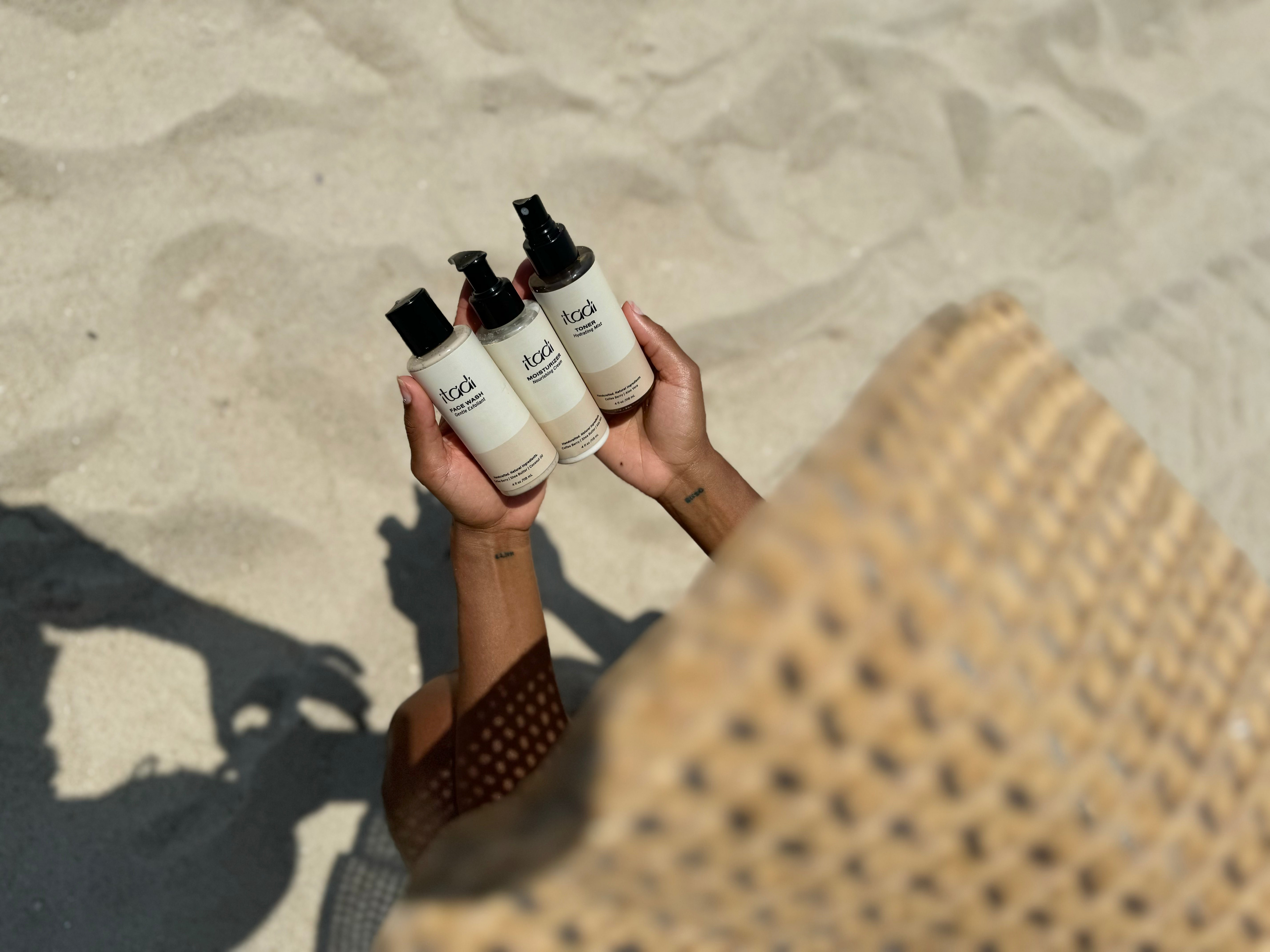Welcome back to the Itadi Body blog! You might have heard the word "exfoliation" thrown around in skincare circles, but what exactly is it, and why is it important? Simply put, exfoliation is the process of removing dead skin cells from the surface of your skin. When done correctly and gently, it can unveil a brighter, smoother, and healthier complexion. Let's explore the gentle art of exfoliation for beginners.
Why Exfoliation is a Game-Changer for Your Skin
Our skin naturally sheds dead cells, but sometimes it needs a little help. When dead skin cells accumulate, they can:
•Make your skin look dull and lacklustre.
•Clog pores, leading to blackheads, whiteheads, and breakouts.
•Prevent your serums and moisturizers from penetrating effectively.
By gently removing these dead cells, exfoliation helps to:
•Reveal Brighter Skin: Fresh, new skin cells come to the surface, giving you a radiant glow.
•Improve Skin Texture: Your skin will feel noticeably smoother and softer.
•Unclog Pores: This can significantly reduce breakouts and congestion.
•Boost Product Absorption: Your other skincare products can work more effectively.
•Stimulate Cell Turnover: Encourages your skin to produce new, healthy cells.
Choosing Your Exfoliation Method: Gentle is Best
There are two main types of exfoliation you can do at home, and the key is always to be gentle and choose what suits your skin type:
1. Mechanical Exfoliation (Physical)
This involves physically scrubbing away dead skin cells. This includes:
•Gentle Scrubs: Look for scrubs with very fine, smooth particles. Avoid harsh, large, or irregularly shaped particles (like crushed nut shells) as these can cause micro-tears in your skin.
•Soft Brushes or Sponges: Tools like soft facial brushes or konjac sponges can provide a very mild physical exfoliation.
How to Use: Apply the product gently using small, circular motions for about 30 seconds, then rinse with lukewarm water. If using a brush or sponge, use short, light strokes. Never scrub vigorously.
2. Chemical Exfoliation
Don't let the word "chemical" scare you! These exfoliants use mild acids to gently dissolve the bonds between dead skin cells, allowing them to shed naturally. They can be very effective and often gentler than physical scrubs if chosen correctly.
•Alpha Hydroxy Acids (AHAs): Such as glycolic acid and lactic acid. These work on the surface of the skin to improve tone and texture. Lactic acid is generally considered gentler than glycolic acid.
•Beta Hydroxy Acids (BHAs): Such as salicylic acid. These are oil-soluble, meaning they can penetrate deeper into pores to help unclog them, making them great for oily or acne-prone skin.
How to Use: Chemical exfoliants are often found in toners, serums, or masks. Follow the product's instructions carefully. For beginners, start with a low concentration and use once or twice a week, gradually increasing frequency if your skin tolerates it. Always apply sunscreen daily when using chemical exfoliants, as they can increase sun sensitivity.
Important Tips for Gentle Exfoliation
•Know Your Skin Type: Sensitive, dry, or acne-prone skin may prefer mild chemical exfoliators or very gentle physical methods. Oily or thicker skin might tolerate stronger options, but always proceed with caution.
•Don't Over-Exfoliate: This is crucial! Exfoliating too often or too aggressively can lead to redness, irritation, dryness, and even breakouts. Start slow and listen to your skin. Most people only need to exfoliate 1-3 times a week.
•Exfoliate on Clean Skin: Always exfoliate after cleansing your face.
•Follow with Moisturizer: Exfoliation can be drying. Immediately apply a good moisturizer after exfoliating to keep your skin hydrated and healthy.
•Avoid Damaged Skin: Never exfoliate if you have open cuts, wounds, or sunburn.
The Takeaway
Exfoliation is a wonderful tool for achieving brighter, smoother, and healthier-looking skin. The key is to approach it gently, understand your skin type, and choose the right method for you. By incorporating gentle exfoliation into your routine, you'll help your other products work better and unveil your natural glow. Happy exfoliating!



0 comments